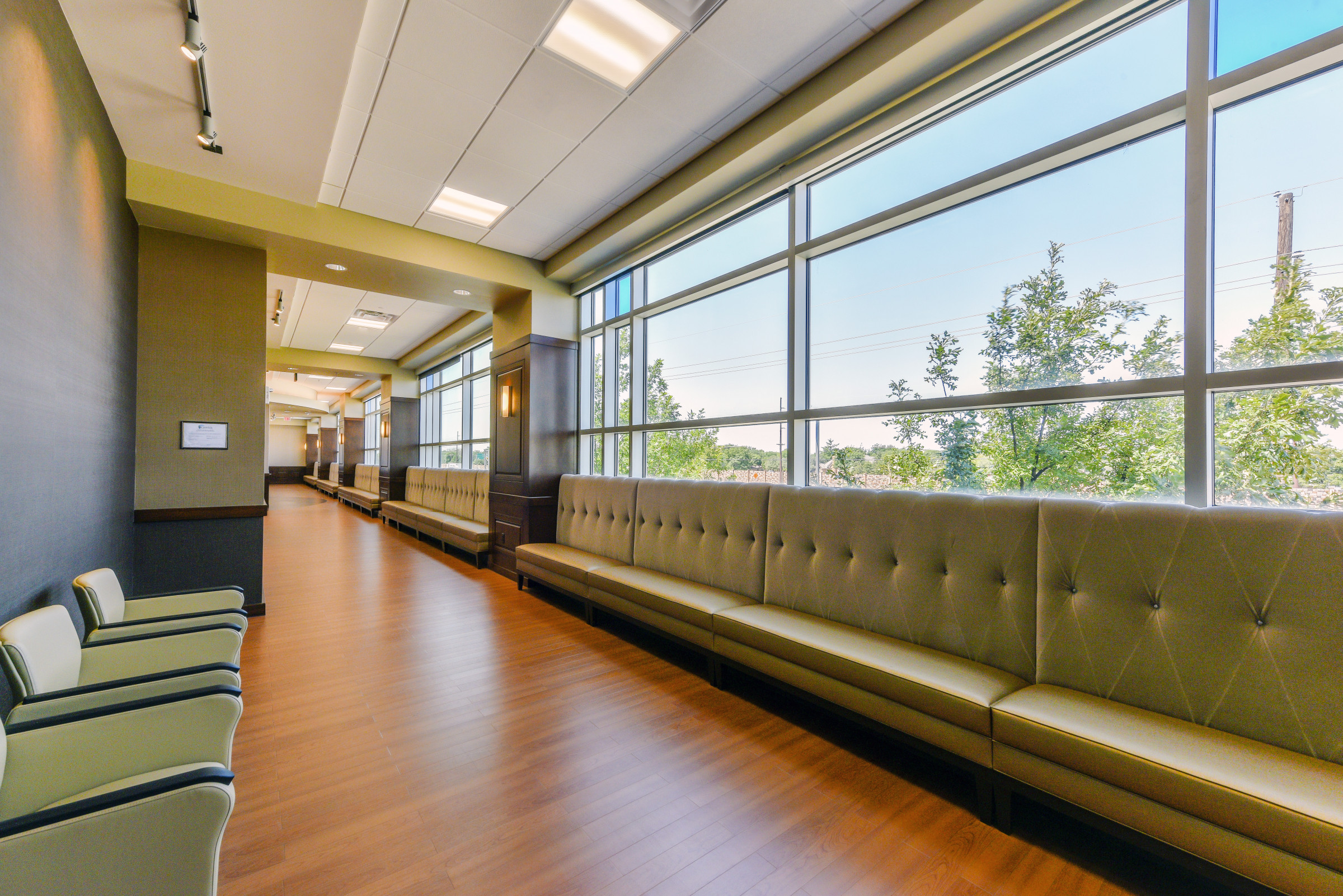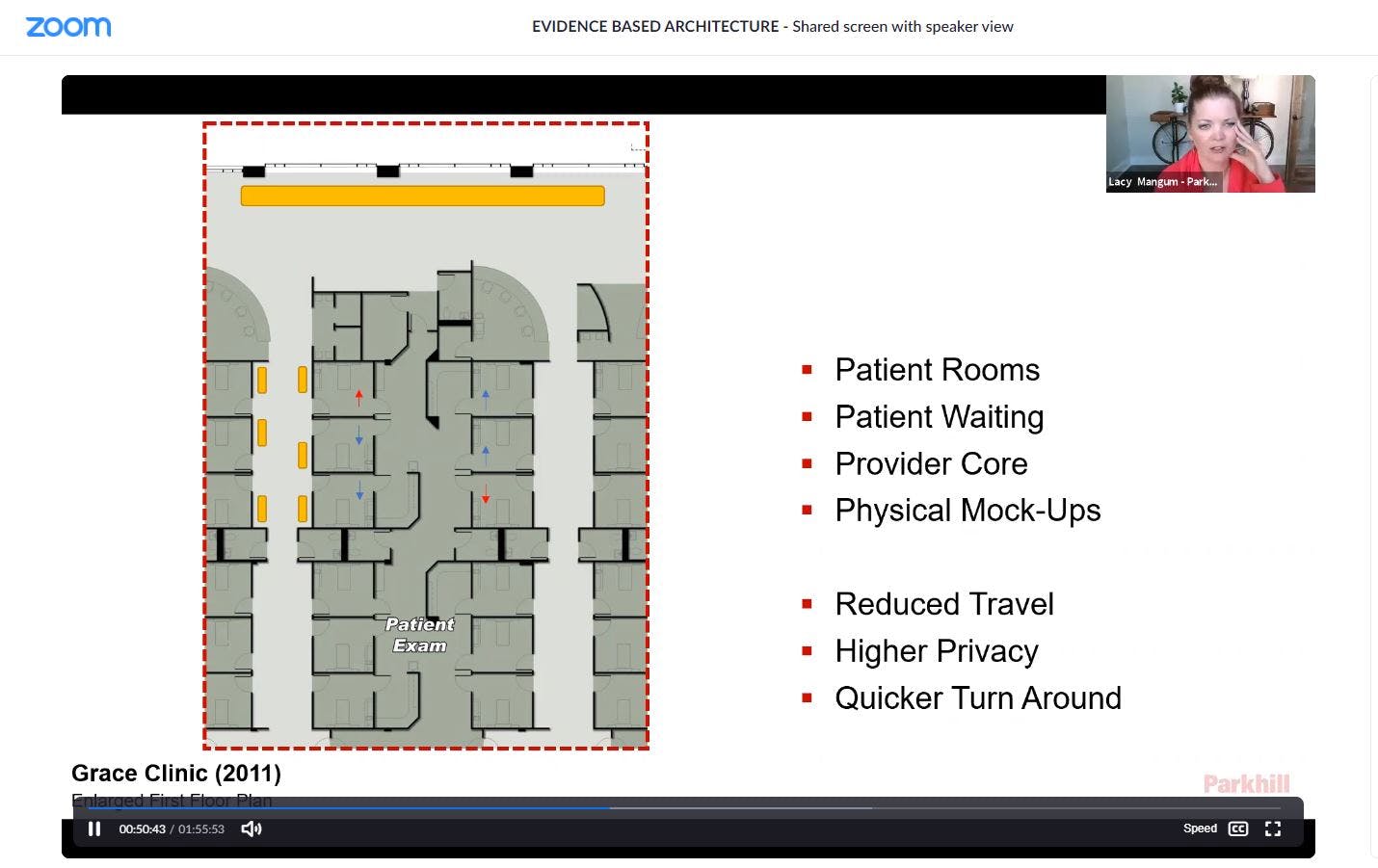Evidence-Based Design Collaboration with TTU College of Architecture
Written By: Nicole McBride
Date: March 15, 2021

 Evidence-based design is a deliberate attempt to base design and building decisions on the best available research evidence with the goal of improving outcomes and continuing to monitor success or failure for subsequent decision-making. Lacy Mangum, IIDA, CHID, and Brandon Hartley, AIA, led a collaborative presentation on evidence-based design in the healthcare industry with Texas Tech University graduate students of Dr. Saif Haq, founder and director of the Design for Health Program in the TTU College of Architecture.
Evidence-based design is a deliberate attempt to base design and building decisions on the best available research evidence with the goal of improving outcomes and continuing to monitor success or failure for subsequent decision-making. Lacy Mangum, IIDA, CHID, and Brandon Hartley, AIA, led a collaborative presentation on evidence-based design in the healthcare industry with Texas Tech University graduate students of Dr. Saif Haq, founder and director of the Design for Health Program in the TTU College of Architecture.
“We can’t fix everything with design, but we can start conversations that lead to culture change and have those discussions alongside vehicle mission,” Lacy said.
Evidence-based design starts with creating empathy and inspiring compassionate empathy, an understanding that leads to action. As part of the presentation, the students were sent a survey about their experiences with healthcare facilities – “How would you describe the environment?” and “How did it make you feel?” – to create thoughts of empathy. Anxious, sterile, and intimidated were some of the words the students used.
 Much of Lacy’s design empathy for patients, patients’ families and nurses stems from 8 years of experience working as a vocational nurse in the Covenant Health Hospital in Lubbock. She said nurses are challenged with multi-tasking, constant changes in technology, evolution of practice and treatment, and physical and emotional stress.
Much of Lacy’s design empathy for patients, patients’ families and nurses stems from 8 years of experience working as a vocational nurse in the Covenant Health Hospital in Lubbock. She said nurses are challenged with multi-tasking, constant changes in technology, evolution of practice and treatment, and physical and emotional stress.
“I still remember the first patient I lost, and it’s been 22 years ago,” Lacy said. “I know her name. I know what room she was in. I can remember her husband being there. It’s really emotional, and it really stays with you.
“Those are the things that I try to keep in mind when I’m practicing my work now. I don’t have a chance to be taking care of patients on the front lines, but I can use evidence-based design to change patient care on this side. I think that’s why evidence-based design is such a part of what I want and have to do.”
The discussion focused on clinic design and how collaborative spaces impact patient care. There are many ways to successfully integrate collaborative spaces within the design. Each project and client bring different challenges and options. Evidence-based design supports analysis of these different methods so that the changes needed to support collaboration in future solutions can be made.
 Grace Clinic, Community Health Center of Lubbock, and the Joe Arrington Cancer Center were a few examples of evidenced-based practice used in this discussion with Dr. Haq and his students.
Grace Clinic, Community Health Center of Lubbock, and the Joe Arrington Cancer Center were a few examples of evidenced-based practice used in this discussion with Dr. Haq and his students.
Brandon said reducing travel time is something he researches in every project. For example, having a single centralized nurse station will create a greater travel distance for some patients and practitioners than others.
Grace Clinic in Lubbock includes grouping 8 practitioners in a space to reduce travel time for supplies and communication – allowing more time to care for patients. The owner of Grace Clinic wanted to change the way clinics functioned. He wanted to improve the communication between staff and keep patients moving through the clinic.
“He went through various room type layouts, and they’re all pretty standard if you think about them, but a lot of variation was where equipment was and where clearances were, as far as when they walked in the room and where the various equipment needed was. Again, they wanted to keep that as minimal as possible to keep those travel distances down and time down,” Brandon remarked.
Brandon said the recent development of using virtual reality/augmented reality technology has allowed more efficient project research and development of designs rather than doing physical mockups of design variations.
In addition to the common needs of these spaces, the clients for of these projects also have their own unique preferences – color palettes and materials, how technology is incorporated into spaces, and numbers of employees.
“Each client has their own palette or what they want to design to, of course,” Brandon said. “You sometimes see really modern clean designs, sometimes you see more traditional designs. Each client has their own kind of aesthetic they will work to.”
Communication and collaboration have a high priority among healthcare staff and will continue to influence design decisions to improve patient outcomes and satisfaction. These successful outcomes promote our use of evidence-based design decision-making in Parkhill’s daily practice.





